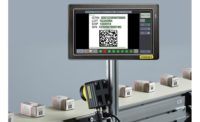Better Quality with the Internet of Things
The connected factory meets quality.

Picture a plant floor that is updating operators, managers and even other plants about potential machine problems. It would connect one machine to another and one system to the next. In order to maintain the highest quality, the systems would monitor any data that seems out of order or check on the line in process.
The Internet of Things is here to make these manufacturing concepts a reality. While buzzwords like this sound intimidating, the benefits can be substantial.
You’ve likely heard the terms, whether in the pages of Quality or in another context related to autonomous vehicles, equipment monitoring, or smart home devices. Although there is a lot of confusion around what exactly the term Internet of Things (IoT) means, the idea is that it allows products to communicate with people and one another. It could be described as the intersection of cyber and physical systems. But at its core, it’s all about data. With this newly available granular detail regarding machines, it is possible to spot trends, connect devices, and make your factory smarter.
According to research from Statista, the industrial Internet of Things (IIoT) market is predicted to reach $123 billion by 2021, with the discrete manufacturing industry projected to spend $40 billion on IoT platforms, systems and services. As you’re shopping for equipment, this may be something to keep in mind. Your next-generation products may have these features already built in.
Maciej Duraj explains the benefits in an article for Forbes. He writes, “Some examples of the way IoT for manufacturing can be utilized is adding online connectivity to machines and hardware; remotely monitoring and sharing of data on manufacturing equipment; using sensors for field service scheduling; as well as data collecting systems in play for equipment and workforce. This will not only make equipment and systems in plants longer lasting, but the hardware stay more efficient as well. Industry 4.0 leverages the power of cloud computing, big data and even machine learning (AI) in the case of Watson IoT, for instance, in order to find the best possible solutions to the whole manufacturing process.”
A Wired article explains it this way: “The Industrial Internet of Things (IIoT) takes networked sensors and intelligent devices and puts those technologies to use directly on the manufacturing floor, collecting data to drive artificial intelligence and predictive analytics.”
And this trend looks like it will continue to grow, in a range of industries including manufacturing. In a July 2018 Forbes article, Daniel Newman writes, “Sensors, RFID tags, and smart beacons have already started the next industrial revolution. Market analysts predict the number of connected devices in the manufacturing industry will double between 2017 and 2020.”
What effect will this have on the quality space? For quality professionals, the Internet of Things can affect their work in a number of specific ways. For one thing, it is clear that data can improve an organization’s quality processes. Six Sigma requires data analysis and IoT data provides another avenue to gathering this information. Aligning the Internet of Things and Six Sigma pairs data gathering and data analysis. Think of the Internet of Things as another route to data. As W. Edwards Deming said, “In God we trust; all others must bring data.”
Quality is essential in providing a means to understand the reams of data that are now available. This should be exciting, though as with any new technology, changes to processes and workflow can understandably be worrying at first. In an ASQ blog, Chris Moustakas offers some reassurance. “If you’re a quality professional and you feel overwhelmed or even threatened by the subject, you shouldn’t: in fact, you should welcome it, because it’s going to make your role that much more critical to your organization. Ultimately, the purpose of data is to derive insights regarding trends and patterns, so as to uncover bottlenecks and inefficiencies. Sound familiar? The tools and methods may be evolving, but at the end of the day a human (you) needs to translate those insights into organizationally appropriate actions.”
“Quality has always been about collecting and understanding data,” Moustakas writes. “By making it easier to gather and analyze information from sources previously prohibitive, technology has thrown open a wonderful door of opportunity. IT may know how to install the sensors and implement the software to crunch the inputs, but why they crunch and to what end needs to be done with purpose – and quality professionals can play a central role in shaping that purpose.”
While technology changes can be intimidating, it is also rewarding to see the improvements take shape. And with this data collection showing no sign of slowing down, it will be helpful to be on the right side of change.
Rather than getting left behind, quality professionals would do well to embrace the data available through the IoT. Consider that the more knowledge you have about your operations, the better the position you will be in to improve it.
Looking for a reprint of this article?
From high-res PDFs to custom plaques, order your copy today!






